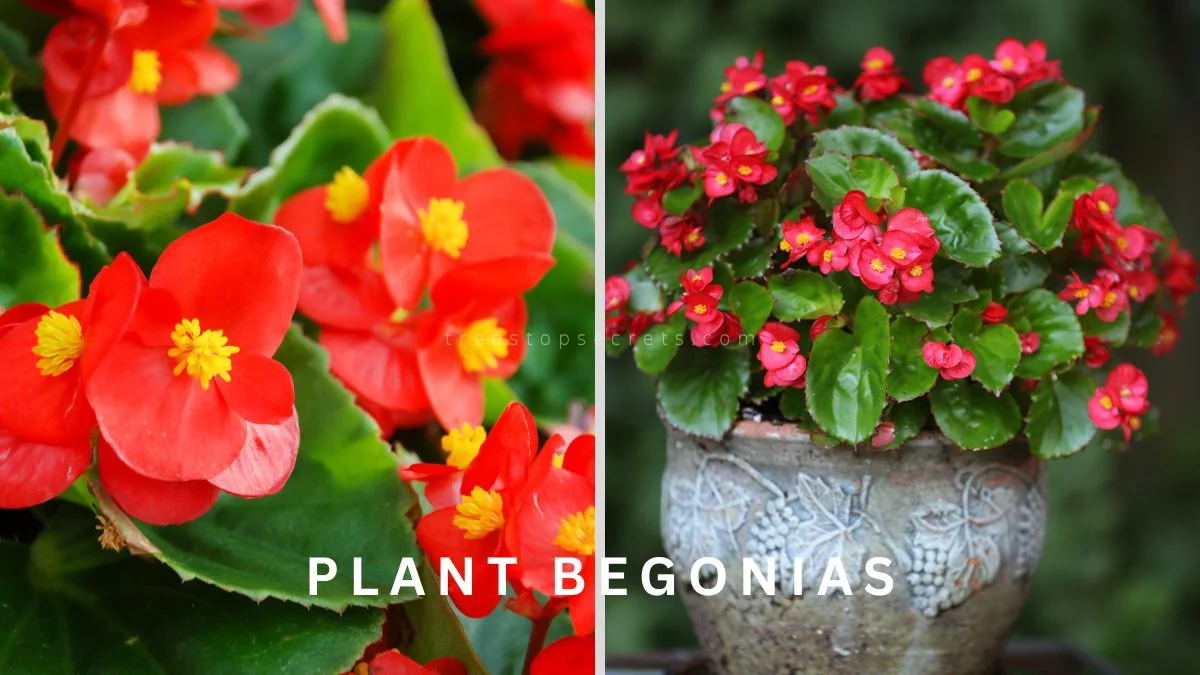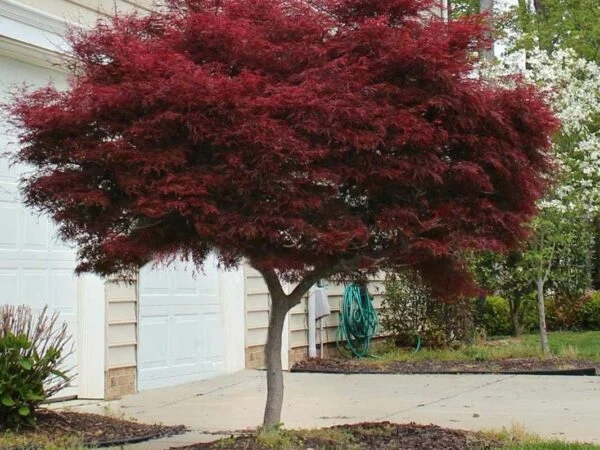Curious about how to plant begonias? Delve into the world of gardening with our simple guide for gardeners, houseplants, flower beds, and green foliage. Whether you're a beginner or a seasoned gardener, learning the art of planting begonias can add a vibrant touch to your outdoor space. We'll cover the basics, from choosing the right soil to providing optimal sunlight and watering techniques. Embrace this opportunity to enhance your gardening skills and elevate your green thumb game. Let's unlock the secrets to successfully planting begonias, houseplants with beautiful blossoms and green foliage, in your garden today.
Key Takeaways
- Understand the planting process of begonias to ensure successful growth.
- Prepare the planting area by choosing the right location and soil conditions.
- Follow specific planting steps such as digging the hole and placing the begonia plant correctly.
- Provide aftercare essentials like watering, fertilizing, and pruning to maintain healthy begonia growth.
- Prevent pest infestations by promoting good plant health through proper care practices.
- Learn propagation techniques to expand your begonia collection effectively.
Understanding Begonia Planting
When to Plant
Start planting begonias indoors 8 weeks before transplanting. Wait until all danger of frost has passed before planting outdoors. Transplant rooted begonias outdoors after they have grown 4 or 5 inches.
Where to Plant
Choose a partially shaded location for begonias exposed to frequent sunlight. Plant begonias 8 to 12 inches apart in well-drained soil. Avoid mulch covering over begonias to prevent rotting.
Begonia Types
Explore different begonia types like tuberous, fibrous, and rhizomatous. Consider the specific care requirements for each begonia type. Select begonia types based on your garden conditions and preferences.
Preparing for Planting
Selecting Tubers
When planting begonias, it's crucial to pick healthy and firm tubers. Check for any signs of damage or rot before selecting them. Opt for tubers with visible sprouts to ensure better growth.
Soil Prep
For indoor planting, use loose and well-drained soil mix to promote healthy growth. Ensure the outdoor soil is moist but not soggy before planting begonias. Keep the soil consistently moist but not soggy to prevent tuber rot.
Pot Selection
Choosing the right pot is essential when planting begonias. Opt for a 5-inch pot for transferring Begonias after they sprout. Select pots with good drainage holes to avoid waterlogging issues. Ensure the pots allow easy root growth and expansion for healthier plants.
Planting Steps
Tubers Orientation
When planting begonias, ensure to plant tubers with the hollow side up in the soil mix. This positioning is crucial for proper growth. The top of the tuber should be level with the soil surface, promoting healthy development. Orienting tubers correctly sets the foundation for robust begonia plants.
Soil Covering
After tubers have sprouted and small leaves are visible, cover them with compost. It's essential to plant them just deep enough so that the soil covers the top of the bulb. Avoid excessive soil covering as it can lead to suffocation of the tubers, hindering their growth potential.
Watering Basics
For successful growth, begin by watering lightly initially and then adjust to keep the soil moist once bulbs start sprouting. If your Begonias receive ample sunlight throughout the day, water them frequently to prevent bud drop. Remember to maintain moist but not soggy soil conditions for optimal growth.
Aftercare Essentials
Initial Care
Begonias should be acclimated gradually to outdoor temperatures before moving them outside. Regularly deadhead all Begonias to promote more blooms. Once established, Begonias require minimal care in their new environment.
Sunlight Needs
- Begonias thrive in indirect sunlight, making them ideal for shaded areas.
- Direct sunlight can cause burning of Begonia leaves, so it's best to avoid intense exposure.
Watering Schedule
- Water Begonias when the top inch of soil feels dry to the touch.
- Overwatering can lead to root rot, while underwatering can cause wilting and stunted growth.
Promoting Healthy Growth
Fertilizing Tips
Begonias thrive when fertilized properly. Use a balanced fertilizer with equal parts of nitrogen, phosphorus, and potassium. Apply the fertilizer every two weeks during the growing season. Over-fertilizing can harm begonias, so follow the instructions carefully.
To ensure optimal growth, consider using a water-soluble fertilizer that is specifically formulated for flowering plants. This will provide essential nutrients to support healthy blooming and overall plant development. Avoid fertilizers high in nitrogen as they can lead to excessive foliage growth at the expense of flowers.
Pruning Practices
Pruning plays a crucial role in promoting healthy begonia growth. Regularly remove dead or yellowing leaves to encourage new growth and prevent disease spread. Trim back leggy stems to promote bushier growth and enhance the plant's overall appearance.
When pruning begonias, use clean and sharp scissors to make precise cuts without causing damage to the plant. Focus on removing any damaged or diseased parts first, followed by shaping the plant to maintain its desired size and shape. Proper pruning will stimulate new growth and improve the plant's overall health.
Pest Management
Pests can harm begonias by feeding on their leaves, flowers, and roots, leading to stunted growth and plant damage.
Identifying Pests
- Common pests that affect begonias include aphids, spider mites, mealybugs, and thrips.
- Keep an eye out for small insects, webbing on plants, or yellowing leaves as signs of pest infestation.
Natural Remedies
- To combat pests organically, use neem oil, insecticidal soap, or a mixture of water and dish soap to deter them.
- Introduce beneficial insects like ladybugs or lacewings that feed on harmful pests without harming the plant.
Preventive Measures
- Regularly inspect your begonias for any signs of pest activity to catch infestations early.
- Avoid over-fertilizing as it can attract pests; instead, opt for slow-release fertilizers to promote healthy growth.
Propagation Techniques
Division Method
Division is a common technique for propagating begonias. To divide begonias, start by gently removing the plant from its pot. Next, carefully separate the root ball into sections, ensuring each section has both leaves and roots. Plant these divisions in individual pots with well-draining soil. Dividing begonias is ideal for rejuvenating overgrown plants or creating new ones.
Leaf Cuttings
Another effective method for propagating begonias is through leaf cuttings. Begin by selecting a healthy leaf from the parent plant, making sure it has prominent veins. Cut the leaf into smaller sections, each containing a vein. Place these sections on a tray of moist soil or water until roots develop. Once roots are established, transfer the cuttings to individual pots. Leaf propagation allows you to create multiple new plants from a single leaf.
Common Issues and Solutions
Overwatering Signs
Overwatering begonias can lead to root rot, a common issue caused by excessive moisture. Signs of overwatering include yellowing leaves, wilting, and a foul odor emanating from the soil. To prevent overwatering, ensure proper drainage in the pot or planting area.
Underwatering Signs
Underwatering is another issue that can affect begonias. Symptoms of underwatering include drooping leaves, dry soil, and slow growth. To remedy this, water the plant thoroughly when the top inch of soil feels dry to the touch.
Nutrient Deficiencies
Nutrient deficiencies, such as lack of nitrogen or iron, can manifest in begonias through pale leaves or stunted growth. To address this problem, consider using a balanced fertilizer specifically formulated for flowering plants. Additionally, regular fertilization during the growing season can help maintain plant health.
Closing Thoughts
In mastering the art of planting begonias, you've delved into the essentials of understanding, preparing, planting, and caring for these vibrant blooms. By following the steps outlined and being proactive in pest management and propagation, you're well on your way to fostering healthy growth and tackling common issues with ease. Remember, a little care goes a long way in ensuring your begonias thrive.
Now that you're equipped with the knowledge to nurture stunning begonias, it's time to roll up your sleeves and get planting! Put your newfound expertise into action, experiment with different varieties, and share your gardening journey with fellow enthusiasts. Your beautiful begonias await – happy planting!
Frequently Asked Questions
How deep should I plant begonias?
When planting begonias, ensure the hole is twice as wide as the root ball but not deeper than the height of the root ball. Gently cover the roots with soil and pat down lightly to secure them in place.
Can I grow begonias indoors?
Yes, begonias can thrive indoors if provided with adequate light, humidity, and well-draining soil. Choose a spot with bright, indirect sunlight and maintain consistent moisture levels to promote healthy growth.
How often should I water begonias?
Water begonias when the top inch of soil feels dry to the touch. Ensure proper drainage to prevent waterlogging, which can lead to root rot. Adjust watering frequency based on environmental factors like temperature and humidity.
What are common pests that affect begonias?
Common pests that may affect begonias include aphids, spider mites, and mealybugs. Monitor your plants regularly for signs of infestation such as yellowing leaves or webbing. Use organic pest control methods or insecticidal soap to manage these pests effectively.
When is the best time to propagate begonias?
The best time to propagate begonias is during the active growing season in spring or early summer. You can propagate begonias through stem cuttings or leaf cuttings for successful propagation results. Ensure the cuttings have at least one node for optimal growth.
Image Source: Paid image from CANVA



